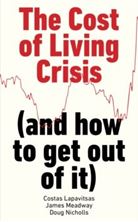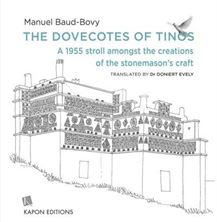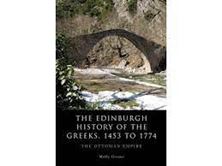Δοκίμιο & Πολιτισμός
The Cosmopolitan Tradition: A Noble but Flawed Ideal
Nussbaum pursues this “noble but flawed” vision of world citizenship as it finds expression in figures of Greco-Roman antiquity, Hugo Grotius in the seventeenth century, Adam Smith during the eighteenth century, and various contemporary thinkers. She confronts its inherent tensions: the ideal suggests that moral personality is complete, and completely beautiful, without any external aids, while reality insists that basic material needs must be met if people are to realize fully their inherent dignity. Given the global prevalence of material want, the lesser social opportunities of people with physical and cognitive disabilities, the conflicting beliefs of a pluralistic society, and the challenge of mass migration and asylum seekers, what political principles should we endorse? Nussbaum brings her version of the Capabilities Approach to these problems, and she goes further: she takes on the challenge of recognizing the moral claims of nonhuman animals and the natural world.
The insight that politics ought to treat human beings both as equal to each other and as having a worth beyond price is responsible for much that is fine in the modern Western political imagination. The Cosmopolitan Tradition extends Nussbaum’s work, urging us to focus on the humanity we share rather than all that divides us.
The Cost of Living Crisis : (and how to get out of it)
We are living through a cost of living crisis, with interest rate hikes and the prices of everyday consumables and energy bills sky-rocketing. Why is this happening? Sometimes we are told that wages are too high, or that the government has "printed" too much money or that events far away, such as the war in Ukraine, are solely to blame. The plain argument that high prices go together with high profits, falling wages, and weak production is often distorted and hidden by mainstream commentary in the media and elsewhere.
This plain-speaking pamphlet tells it straight: the big businesses dominating production and distribution make huge profits out of high inflation, while working people lose out. It sets out factual evidence to illustrate that the source of record profits is the fall in real wages as inflation rises. A large part of the income of working people is being transferred directly into the profits of big business.
The pamphlet shows that the deeper roots of the "cost of living crisis" lie in the very low investment and poor productivity growth for many years. The basic steps to resolving the crisis are simple: prices, especially of essentials, must be brought down, and wages, salaries, benefits, and pensions must be increased.
The Cretan Journal
The Cretan Way
The Cretan Way is a 500 km walking route which takes you from east to west across the varied and spectacular landscapes of Crete. It is the ideal way to discover the rural, mountainous and coastal regions of this incredible island.
This guidebook is the first ever guidebook for the route and includes maps, descriptions, a travelogue, GPS tracks, accommodation info and tips for walking one of the most remarkable long-distance routes in the world.
The Decline and Fall of the Roman Empire
The Dictionary Of Dainty Breakfasts
The Dictionary People : The unsung heroes who created the Oxford English Dictionary
The Dovecotes Of Tinos
Ιn 1955, a young student of the Geneva School of Architecture, Manuel Baud-Bovy, visited Tinos for the first time, staying in a cottage on the sandy beach of Kiona.
While exploring the island, Manuel came across some unusual buildings that he had never heard of before. With growing surprise and enthusiasm, in each of his excursions he discovered lonely dovecotes on sandy beaches, others nestling into the slopes and others dominating the heights, each surpassing the last in beauty and dignity.
Thanks to his father, Samuel, an ethnomusicologist, Manuel had developed an interest in the study of folk culture. Moreover, his famous grandfather, Daniel, had published studies and books on traditional Swiss architecture …
Manuel Baud-Bovy, deeply impressed, thought of compiling a systematic list of the dovecotes. He walked all over the island and sometimes slept in a village, sometimes under the stars or on a threshing floor, in a chapel, or even in an abandoned dovecote. He discovered about eight hundred of them, which he recorded in four large albums with detailed plans, theories and thoughts, which he submitted to the Geneva School of Architecture for his doctoral dissertation.
After 60 and more years, a selection of this rare and valuable material becomes a book, enriched with introductory texts and many photographic documents that capture the dovecotes as they were preserved in 1955. In this way, this work strongly highlights the need to protect our cultural heritage while encouraging us to tramp the paths of the island once more …
The Durrells of Corfu
The Edinburgh History of the Greeks, 1453 to 1768 : The Ottoman Empire
This volume considers this new scholarship, most of it in Greek, and makes it accessible for the first time to a wider audience. Molly Greene also discusses the changing views of the Ottoman Empire more generally and assesses what this changing historiography can tell us about this period in Greek history. The book begins with the conventional date of 1453, the fall of Constantinople, and includes debates over the extent to which 1453 represented a real break with the past.
The volume ends with the Russo Ottoman War of 1768 - 1774, which brought to an end the relative peace and stability of the Ottoman eighteenth century and helped to usher in the nationalist movements in the region. It covers the period from the fall of Constantinople to the Russo Ottoman War; It assesses new scholarship on the period and synthesises this for the reader; the fate of the 1,000 year Byzantine heritage; the millet system and Ottoman society; the connections between the Greek population and other members of Ottoman society and the Greeks in a European context.
φίλτρα αναζήτησης:
Καθαρισμός Όλων











